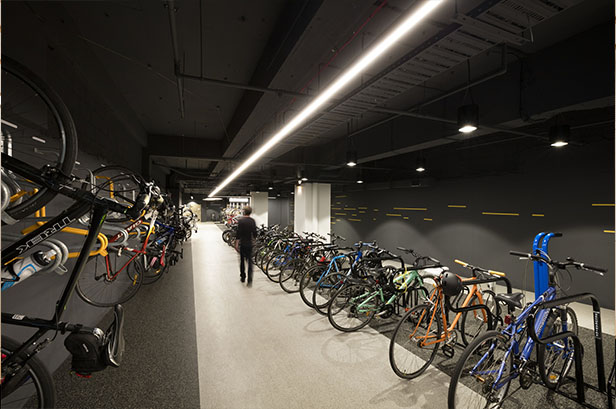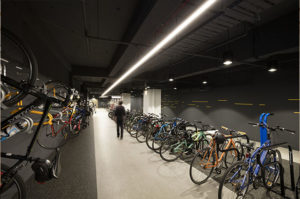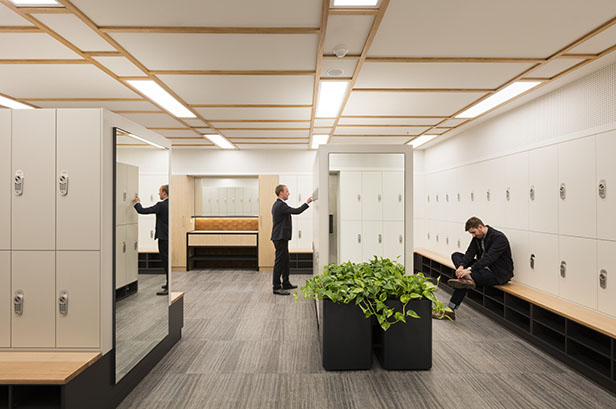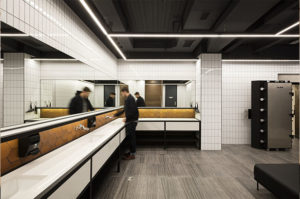
Originally built for the Commonwealth Bank in the 1970s, 367 Collins Street is a 32-level commercial tower between Elizabeth and Queen Streets in Melbourne. Woods Bagot was tasked with designing the first stage of the project for Mirvac. Known as ‘The Nest’, facilities and bike storage (end-of-trip facilities) which are located in the lower ground level of the building – a space that initially housed a series of old bank vaults and safety deposit boxes.
Lead designer Hazel Porter said the team worked within the existing building fabric to employ architectural symmetry to bring new spaces to life and encourage active participation of the building’s tenants through contemporary amenities.
“The new end-of-trip experience, designed exclusively for its users, provides a high level of comfort and convenience to promote a healthy and balanced lifestyle. The facility offers a fully integrated zone of secure lockers, WCs, showers and change areas in a comfortable and luxurious purpose-built space,” she said.
The design challenge for the team was to regenerate, reconfigure and add to the existing built form in order to shift the entrenched perception of the building asset.

New retail spaces along both Collins Street and Flinders Lane proposed as part of stage two will further enhance the Melbourne city streetscape and co-align its architectural motif to contribute to the pedestrian experience.
With the commercial market and existing landowners facing an increasingly competitive environment, tenants are looking for greater amenity beyond their immediate workplace floors, Hazel said a broader precinct offering was crucial. This included the integration of food and beverage, end-of-trip facilities and public transport offerings.
“Melbourne City is transforming at a macro level; it’s gone from a primarily commercial-focused entity to a precinct filled with residential, hospitality, culture, art and sport. The city is continuing to become a much more diverse place right through to its workplace settings, so it’s essentially about finding ways to ensure buildings are an extension of the public realm.”


